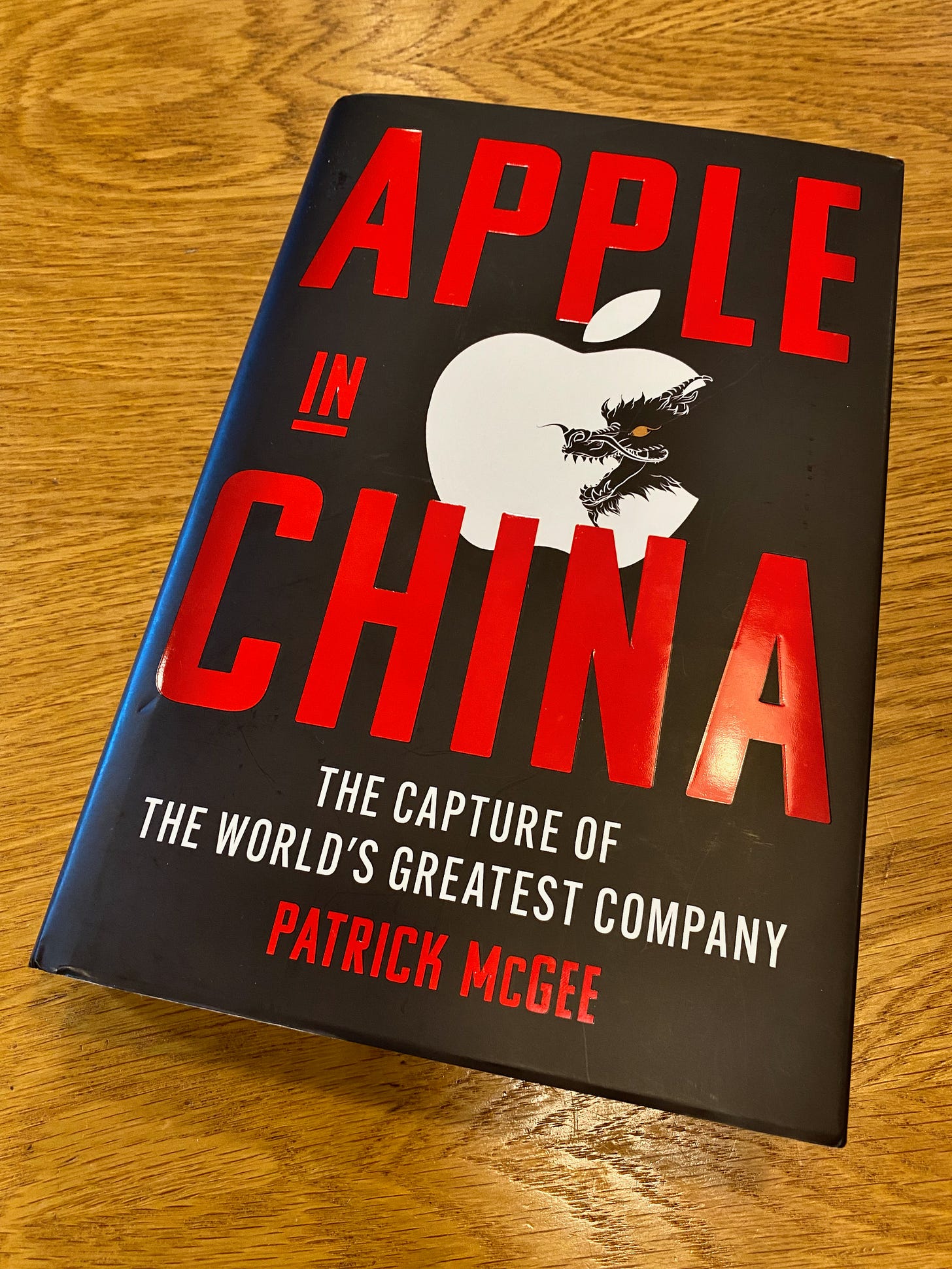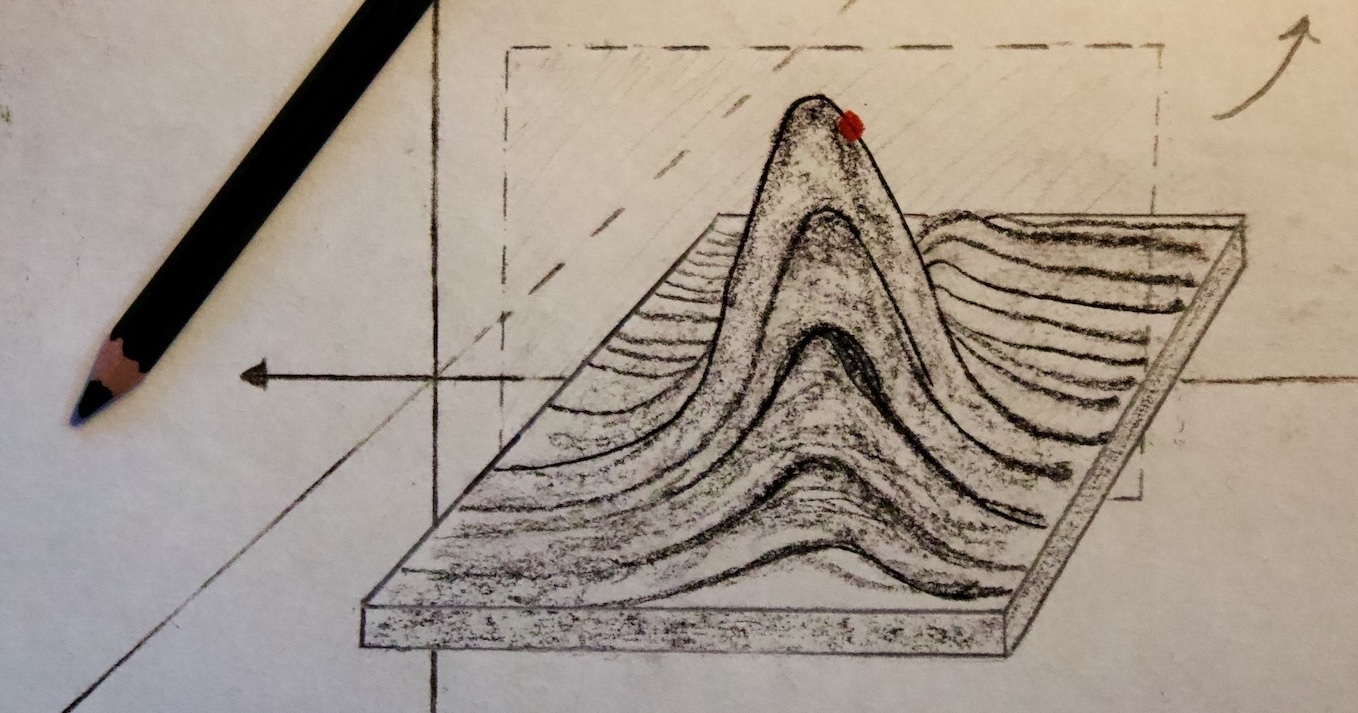Well, remember the army of millions and millions of human beings screwing in little screws to make iPhones. That kind of thing is going to come to America. It's going to be automated and great Americans, the trade craft of America is going to fix them, is going to work on them …
U.S Secretary of Commerce, Howard Luttnick on Face the Nation April 7 2025
Where is your phone made? And does it matter?
Readers of this Substack will know that answering even the first of these questions isn’t a simple matter.
It’s very likely that the ‘System-on-Chip’, containing the phone’s Central Processing Unit and other essential electronics, is made in Taiwan by TSMC. Millions of words have been written about the world’s reliance on TSMC for leading edge silicon and the vulnerability that this introduces into global supply chains for the most advanced semiconductors.
But what about the rest of the manufacturing process? The work needed to assemble hundreds of components into a working phone. Most readers will be aware that the majority of the 1.2 billion smartphones shipped worldwide in 2024 were assembled in mainland China.
But does this matter? The current United States government under Donald Trump certainly thinks so. At the time of writing, his stated intention is to impose import tariffs of 25% on iPhones made outside of the United States.
Donald Trump has threatened to impose a 25% tariff on iPhones if they are not made in the United States, as he stepped up the pressure on Apple to build its signature product in the country.
The president wiped approximately $70bn (£52bn) off the company’s shares with a post on the Truth Social platform that said iPhones sold inside the US must be made within the country’s borders.
Trump said in the post: “I have long ago informed Tim Cook of Apple that I expect their iPhones that will be sold in the United States of America will be manufactured and built in the United States, not India, or anyplace else. If that is not the case, a Tariff of at least 25% must be paid by Apple to the US.”
This is, of course, only the latest of a series of announcements that have seen tariffs introduced, then removed, then added again.
It’s clear, though, that the US government sees the fact that iPhones are made in China as a bad thing and, as per Howard Luttnick’s quote above, wants to see ‘the screwing in little screws to make iPhones’ happening in the United States.
Into this maelstrom comes Patrick McGee’s new book, Apple in China.
McGee was the Financial Times principal Apple reporter from 2019 to 2023 and knows the company intimately. In his interview on ‘The Circuit’ podcast, linked below, he talks about the difficulty of saying something new about probably the world’s most discussed firm, and that he wanted every page to have previously unreported information on the firm.
It’s a tall order, but McGee succeeds. The book sheds new light on several aspects of the firm’s business. There are new angles on the development of key products including the iMac, iPod and iPhone. New stories featuring key players in Apple’s management, such as Steve Jobs, Tim Cook and Jony Ive. The book would be engrossing for this alone.
The central focus of the book, though, is on the relationship between Apple and the firms who have made Apple’s products over the last three decades. Most recently those firms have based the majority of those manufacturing operations in mainland China. So understanding these relationships allows McGee to draw wider conclusions about Apple’s role in the development of China’s economy and capabilities over the last twenty years. And the startling conclusions he draws are what makes this an important book.
“A journey of a thousand miles begins with a single step”, says the saying ascribed to Laozi, and Apple’s journey into China started with a step on the US mainland: selling a Macintosh manufacturing plant in Colorado to US contract manufacturer SCI.
This was a momentous step though. In his first period at Apple, Steve Jobs had taken enormous pride in Apple’s in house manufacturing. At NeXT he invested heavily in automated manufacturing only to have to abandon NeXT’s hardware ambitions. The sale of the Colorado plant, just before Jobs’s return, was a financial necessity; Apple was days away from insolvency.
The use of contract manufacturing proved to be a resounding success but only after some experimentation. LG tried to build iMacs in Wales only for the line to become known as the ‘toaster line’ for its tendency to see those machines burst into flames.
It was Terry Gou and his Taiwanese firm Foxconn that would eventually take the majority of Apple’s contract manufacturing and lead the way into mainland China. There he delivered high quality, scale and flexible manufacturing at ultra low margins.
But it wasn’t just Terry Gou’s foresight, accepting conditions that others wouldn’t, that was behind this change. He did so with the help of the Chinese government. Not the central government in Beijing, but local officials who would pave the way for the construction of the huge manufacturing plants that Foxconn needed.
And Foxconn and its suppliers would gain from this, copying what Apple showed them when making products for other firms. At first Cook and his team were outraged, calling it ‘the worst thing in the world’. But they soon came to accept it as an acceptable ‘cost of doing business’ in China:
… Cook's team grew to understand that the innovations it came up with would be mimicked in China, usually within a year. This was simply the cost of doing business there. Ideally, Apple could keep secret particular processes, or demand exclusivity, but the duration of such agreements rarely went beyond twelve months. Efforts were made to prevent suppliers from brazenly offering the exact same thing to Apple's rivals, but suppliers could at least approximate what they'd accomplished and offer it to others.
China’s central government in Beijing wasn’t central in Apple’s transfer of its manufacturing success. In fact, when Xi Jinping came to power in 2013 he was immediately suspicious of Apple and its approach to doing business in the country. Apple was soon on the receiving end of hostile actions from the new regime.
Their response was a campaign to make clear how aligned their approach to doing business in China was with the objectives of Xi’s government.
… Apple's investments weren't just large, they were ruthlessly efficient and narrowly targeted in the advanced electronics sector—"by far the most important" thing desired by Xi, according to China scholar Barry Naughton. Conveyed in the right language, this impact was wildly supportive of Beijing's goals to learn from the West and move up the value chain.
As part of this campaign Cook and Jeff Williams would travel to Beijing in 2016 to make an extraordinary pledge to senior Chinese officials: to invest $275 billion over the next five years. McGee puts this value into context: it’s more than double in 2016 dollars, the amount committed by the US to the Marshall plan for reconstruction after the Second World War.
Xi Jinping wasn’t the only powerful leader that Apple would have to deal with in 2016. One sub-plot that emerges late in the book, is the relationship between Apple and Donald Trump. In 2017, with Apple threatened, both in China and elsewhere, by Huawei’s high end phones, Trump comes to Cupertino’s rescue by crippling the Chinese firm’s access to 5G technology.
Trump soon turned his attention to Apple’s manufacturing, telling Tim Cook in 2017
Tim, unless you start building your plants in this country, I won't consider my administration an economic success.
Cook placated ‘first-term’ Trump with a PR opportunity at an existing plant, owned by contract manufacturer Flex, making Mac Pros in Texas. Even that limited exercise, though, was problematic. McGee quotes the experience of one person involved:
There was a bunch of stuff that we at Apple were very used to doing, that just didn't work anymore. Like, we're very fond of making custom fastening hardware, custom screws—you know, little nuts and stuff like that. Well, in China, if you're building and it's like, "Oh, shit, the screw is too short," and like, "I need a longer one," you call someone on a cellphone and 1,000 are at the factory tomorrow. That was not a thing in Texas. It would take two months. It was absurd.
The plant served its purpose though and Trump moved on. ‘Second term’ Trump, though, at the moment looks like he will be less easy to impress.
And Trump’s renewed interest comes at a time when Apple is being forced to deepen rather than loosen its ties with China. As the book describes, manufacturing has been transferring from Taiwanese Foxconn to a range of mainland-owned contract manufacturers, with the ‘hidden hand’ of the Chinese government behind these, apparently ‘voluntary’, shifts.
And this is where we return to one of the questions we opened with: ‘Does it matter where your (Apple) phone is made?’
McGee answers with an unequivocal ‘yes’ although perhaps we should change ‘does it matter’ to ‘has it mattered’. Because McGee’s thesis is that Apple has played an enormously important role in China’s development. Eschewing the ‘joint venture’ structure that other firms have been forced into, nonetheless, Apple’s presence in the country has led to a huge transfer of expertise about how to build high-end electronics at massive scale. That expertise has inevitably made its way into competing Chinese firms who have used it to grow their own businesses.
Apple has benefited from the scale, flexibility and price that China can offer but in doing so it has created a trap.
In 2025 it’s not just about price, it’s not just about ‘screwing in little screws’. Other countries can provide low-cost labor at scale. We can hear from Tim Cook himself:
There's a confusion about China. Let me at least give you my opinion. The the popular conception is that companies come to China because of low labor cost. I'm not sure what part of China they go to, but the truth is China stopped being the low labor cost country many years ago. And that is not the reason to come to China from a supply point of view.
The reason is because of the skill and the the quantity of skill in one location and the type of skill … the products we do require really advanced tooling and the the precision that you have to have in tooling and working with the materials that we do are state-of-the-art and the tooling skill is very deep here.
You know, in in the US, you could have a meeting of tooling engineers, and I'm not sure we could fill the room. In China, you could fill multiple football fields. It's that vocational expertise is very deep, very very deep here. And and I give the the education system a lot of credit for continuing to push on that even when others were de-emphasizing vocational.
‘Tooling skill’, ‘Vocational skill’.
Cook would want you to believe that it’s because ‘others [the US?] were de-emphasizing vocational [skills]’ but at best that’s only part - and probably a small part - of the story. McGee’s thesis is that much of that tooling skill, on the specialist tools that Apple uses, has come as a result of Apple’s presence in the country and Apple’s own investment in training in using those tools.
Apple’s reliance on China comes at a price. To quote Doug Guthrie, who was a key member of Apple’s team in China for a number of years:
The cost of doing business in China today is a high one, and it is paid by any and every company that comes looking to tap into its markets or leverage its workforce. Quite simply, you don’t get to do business in China today without doing exactly what the Chinese government wants you to do. Period. No one is immune.
…
China *will* get its pound of flesh as the cost of operating there: you get to operate here and gain access to the the most innovative supply chain in the world and world’s largest marketplace; and China gets what it wants in terms of benefits to Chinese economy and society (as defined by the Chinese Government).
Apple may want to leave, or at least reduce its dependence on, China now but doing so will be far from straightforward.
Aside from it’s heavy investment in the country and its skills, the Chinese government - in the form of the Chinese Communist Party - has its own tools to keep Apple where it is. The country is a huge and vital market for Apple’s products. Disruption of both Apple’s Chinese sales and its existing production in China could be easily achieved if the CCP so desires.
Today, Cook and Apple find themselves between a rock - Donald Trump - and a hard place - Xi Jinping.
One is left pondering how Cook could allow this impasse to happen. The answer comes from the quote from one Apple employee, quoted by McGee:
‘You keep talking about geopolitics, but I was there in the 2000s when we were setting up production in China, and I can tell you, we weren't thinking about geopolitics at all.’
A book about the complex entanglement between the world’s most valuable company and the world’s most populous country would be compelling enough.
But ‘Apple in China’ is more than that. It’s sheds new light on Apple’s momentous turnaround under Steve Jobs. It shows that making phones in 2025 is about a lot more than ‘screwing in little screws’.
And in this moment, when the future of the world’s economy seems to hinge on the future of the trade relationship between the United States and China, a relationship that has Apple as it’s highest profile and arguably most important component, the book could hardly be more timely.
Strongly recommended.
If you’d like to hear more from Patrick McGee, then he appeared a terrific recent ‘The Circuit’ podcast episode with Ben Bajarin and Jay Goldberg. Links below.
.png)





